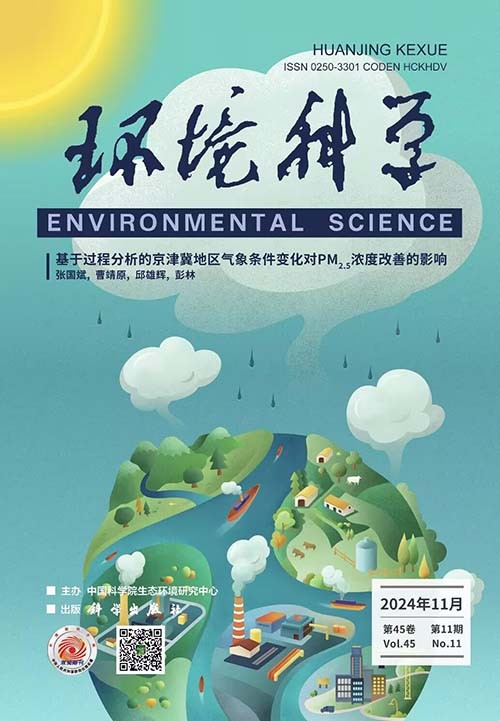[水稻不同组织不同生育期抗砷内生细菌的筛选与鉴定]。
Q2 Environmental Science
引用次数: 0
摘要
土壤微生物在土壤-植物系统中对砷的运输和转化至关重要。内生菌是一种非常丰富的微生物资源,但到目前为止还没有研究报道内生菌对砷污染的反应。本研究从水稻的根、茎、叶和穗中分离出可培养的内生细菌。永优538)在苗期、分蘖期、开花期和多产期。所有菌株先用1 mmol·L-1亚砷酸盐[As(Ⅲ)]和10 mmol·L-1砷酸盐[As(Ⅴ)]进行筛选,再用2 mmol·L-1 As(Ⅲ)和20 mmol·L-1 As(Ⅴ)进行筛选,共获得水稻内生菌126株,隶属13属。其中,水稻苗期分离菌株37株(8属),分蘖期分离菌株25株(5属),开花期分离菌株24株(8属),生育期分离菌株30株(8属)。优势属为芽孢杆菌(Bacillus sp.)、单胞菌(Psoudomonas sp.)和不动杆菌(Acinetobacter sp.)。经2次筛选,发现耐1 mmol·L-1 As(Ⅲ)和10 mmol·L-1 As(Ⅴ)的菌株有20株,其中耐2 mmol·L-1 As(Ⅲ)的菌株有16株,耐20 mmol·L-1 As(Ⅴ)的菌株有13株,其中菌株CS1是所有分离菌株中对As(Ⅲ)和As(Ⅴ)的抗性最强的菌株。本文章由计算机程序翻译,如有差异,请以英文原文为准。
[Screening and Identification of Arsenic-resistant Endophytic Bacteria from Different Rice Tissues (Oryza sativa L.) in Different Growth Stages].
Soil microorganisms are critical for arsenic transport and transformation in the soil-plant system. Endophytes are a very rich microbial resource, but to date no study has reported the responses of endophytes to arsenic pollution. In this study, the cultivable endophytic bacteria were isolated from the root, stem, leaf, and panicle of rice (Oryza sativa L. cv. Yongyou-538) at the seedling stage, tillering stage, flowering stage, and productive stage. All isolates were first screened by 1 mmol ·L-1 arsenite[As (Ⅲ)] and 10 mmol ·L-1 arsenate[As (Ⅴ)], and further screened by 2 mmol ·L-1 As (Ⅲ) and 20 mmol ·L-1 As (Ⅴ). From this study, a total of 126 strains of rice endophytes were obtained, belonging to 13 genera. Among them, 37 strains (8 genus) were isolated from the rice seedling stage, 25 strains (5 genus) were isolated from the rice tillering stage, 24 strains (8 genus) from the rice flowering stage, and 30 strains (8 genus) from the rice productive stage. The dominant genera were Bacillus sp., Psoudomonas sp., and Acinetobacter sp. After twice screening, 20 strains were found to be resistant to 1 mmol ·L-1 As (Ⅲ) and 10 mmol ·L-1 As (Ⅴ), including 16 strains that were resistant to 2 mmol ·L-1 As (Ⅲ) and 13 strains were resistant to 20 mmol ·L-1 As (Ⅴ). Importantly, the strain CS1 was found to be the most resistant bacteria to both As (Ⅲ) and As (Ⅴ) among all the isolated strains.
求助全文
通过发布文献求助,成功后即可免费获取论文全文。
去求助
来源期刊

环境科学
Environmental Science-Environmental Science (all)
CiteScore
4.40
自引率
0.00%
发文量
15329
期刊介绍:
 求助内容:
求助内容: 应助结果提醒方式:
应助结果提醒方式:


